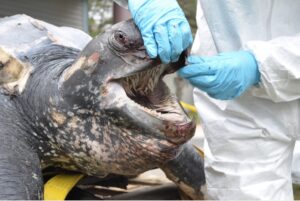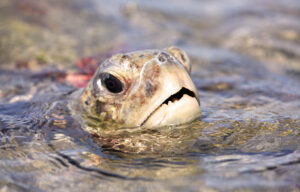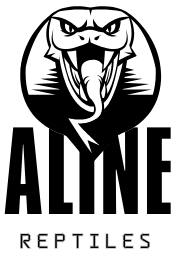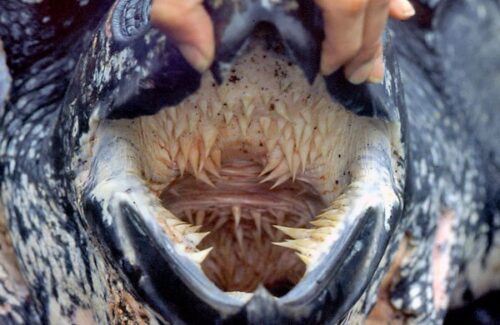When you think of turtles, a lot of images may come to mind: slow-moving, ancient creatures that have roamed the earth for millions of years. They’re a symbol of wisdom, longevity, and the natural world’s resilience. But one question that often arises when people learn about these remarkable reptiles is: Do sea turtles have teeth?
It’s an interesting question, one that sparks curiosity about the eating habits of these marine giants. After all, many creatures in the animal kingdom rely on teeth for survival—sharks, crocodiles, and even other reptiles like lizards. But sea turtles, known for their graceful swimming and hard, protective shells, are a bit different. So, do they have teeth? How do they manage without them?
In this article, we’ll dive deep into the anatomy and behavior of sea turtles to uncover the truth about their teeth (or lack thereof). By the end, you’ll have a full understanding of these oceanic reptiles and their incredible adaptations for feeding, hunting, and surviving in the vast, unpredictable seas.
The Anatomy of Sea Turtles: An Overview of These Amazing Creatures

Sea turtles are one of the oldest and most iconic reptiles on Earth, with a history that dates back over 100 million years. They belong to the order Testudines and are distinguished by their hard, protective shells, which are actually part of their skeletons. Unlike most reptiles, sea turtles have adapted to life in the water, and each species has unique characteristics that allow them to thrive in the ocean.
There are seven species of sea turtles, including the Green Sea Turtle, Loggerhead Turtle, Leatherback Turtle, and Hawksbill Turtle, each with specific behaviors, habitats, and feeding habits. However, despite their differences, all sea turtles share a common feature—they do not have teeth.
But how do they manage without the biting and tearing tools that most other predators rely on? To answer this, we first need to explore the structure of their mouths and how they’ve adapted to their diet and lifestyle.
Do Sea Turtles Have Teeth? The Simple Answer
At first glance, the idea of sea turtles not having teeth may seem surprising. After all, many animals, from carnivores to omnivores, rely on teeth to chew, bite, and tear their food. But the truth is that sea turtles have no teeth whatsoever. Instead, they have beaks that function in a very different way.
These beaks are sharp, strong, and perfectly suited to their diet. The absence of teeth in sea turtles is one of their many evolutionary adaptations to living in the ocean, where their feeding needs differ from those of land animals.
Rather than using teeth to rip into meat or crush food, sea turtles use their beaks to cut, crush, and tear at their food. This beak is designed to be highly efficient for their particular dietary needs, and it serves them well in the wild.
How Sea Turtles Eat Without Teeth: The Power of Their Beaks
Sea turtles may not have teeth, but that doesn’t mean they go hungry! Their beaks are incredibly specialized tools that help them manage their diet. Here’s how they make it work:
- Beak Structure: The shape and strength of a sea turtle’s beak depend on its species and diet. For example, green sea turtles, which are herbivores, have a sharp, pointed beak designed for grazing on seagrasses and algae. On the other hand, loggerhead turtles, which are carnivores, have a much more robust, powerful beak that allows them to crush hard-shelled prey like crabs and mollusks.
- Feeding Techniques: Instead of chewing like humans or animals with teeth, sea turtles typically tear or scrape their food using their beaks. A loggerhead, for example, might use its powerful beak to crush a crab’s shell, while a green sea turtle might nibble on seagrass with a delicate, precise motion. Their beaks are perfectly suited to their specific feeding needs.
- No Chewing Necessary: Unlike animals that need teeth to break down their food into smaller pieces for digestion, sea turtles have a different method of digestion. They rely on swallowing large pieces of food and letting their digestive system do the rest. In some cases, their stomachs and intestines are designed to break down even the toughest of foods, such as jellyfish or seaweed.
The Diet of Sea Turtles: Herbivores, Carnivores, or Omnivores?
One of the most fascinating aspects of sea turtles is their varied diets, which depend on the species and their natural environment. Let’s take a closer look at how these creatures feed and what they eat:
- Green Sea Turtles (Herbivores): Green sea turtles are primarily herbivores and mostly feed on seagrasses and algae. Their sharp, pointed beaks are perfect for nibbling on vegetation, allowing them to graze on underwater meadows.
- Loggerhead Turtles (Carnivores): Loggerhead turtles, on the other hand, are carnivorous. They feed on crabs, jellyfish, clams, and mollusks. Their powerful beaks allow them to crush the tough exteriors of these creatures, enabling them to access the nutritious insides.
- Hawksbill Turtles (Omnivores): Hawksbill turtles are more omnivorous, feeding on a combination of sponges, sea anemones, and occasionally jellyfish. Their narrow, pointed beaks help them pry open coral reefs to access their food.
- Leatherback Turtles (Jellyfish Specialists): Leatherback sea turtles are known for their diet of jellyfish. These turtles have specialized mouths and throats designed to swallow these soft, squishy creatures whole. While they don’t need teeth to chew their food, their digestive systems are well-equipped to process jellyfish.
How Sea Turtles Survive and Thrive Without Teeth
You might wonder, with the absence of teeth, how do sea turtles manage to survive in the wild? The answer lies in their remarkable evolutionary adaptations. Over millions of years, sea turtles have developed several features that make them perfectly suited to their marine environment:
- Strong Beaks: As we’ve seen, sea turtles’ beaks are sharp and powerful, allowing them to tear, scrape, and crush their food with ease.
- Efficient Digestion: Sea turtles have highly efficient digestive systems that can process large, tough, and often indigestible food items, such as jellyfish, seagrass, and hard-shelled prey.
- Long Migrations and Hunting Skills: Sea turtles are known for their long migrations, often traveling thousands of miles between feeding and nesting sites. Their ability to forage for food in diverse habitats, from open ocean to coastal waters, ensures they can find what they need to survive.
- Slow Metabolism: Sea turtles have a slow metabolism, which allows them to go without food for extended periods. This is especially important during long migrations, when food sources might be scarce.
The Importance of Sea Turtles in the Ecosystem

While sea turtles may not have teeth, they play a vital role in maintaining the health of marine ecosystems. Here’s how:
- Seagrass Bed Maintenance: Green sea turtles help maintain seagrass beds by grazing on the vegetation. This helps prevent seagrass from becoming overgrown, which in turn supports other marine life.
- Coral Reef Health: Hawksbill turtles feed on sponges that would otherwise overtake coral reefs. By controlling sponge populations, they help maintain the delicate balance of coral ecosystems.
- Jellyfish Population Control: Leatherback turtles are essential in controlling jellyfish populations. Without leatherbacks, jellyfish populations could explode, negatively affecting fish stocks and even impacting human industries like fishing.
Frequently Asked Questions About Sea Turtle Teeth
Q: Do sea turtles have any form of teeth-like structures?
A: While sea turtles do not have traditional teeth, their beaks can appear tooth-like in some species due to their sharpness and shape.
Q: Why do sea turtles not need teeth to eat?
A: Sea turtles’ beaks are adapted to their diets, which involve tearing, scraping, and crushing food rather than chewing. Their digestive systems are also designed to handle large, tough pieces of food.
Q: How do sea turtles eat jellyfish without teeth?
A: Leatherback turtles have specialized throats and digestive systems that allow them to swallow jellyfish whole, without the need for teeth to break them down.
Conclusion
Although sea turtles don’t have teeth, their distinctive beaks and specialized feeding techniques make them some of the most captivating creatures in the ocean. The fact that they can thrive without teeth demonstrates the remarkable adaptability of life on Earth, where evolution has developed ingenious solutions to life’s challenges.
From their long migrations to their essential role in maintaining healthy marine ecosystems, sea turtles are truly a marvel of nature. So, do sea turtles have teeth? The answer is no, but their evolutionary adaptations are just as impressive.

